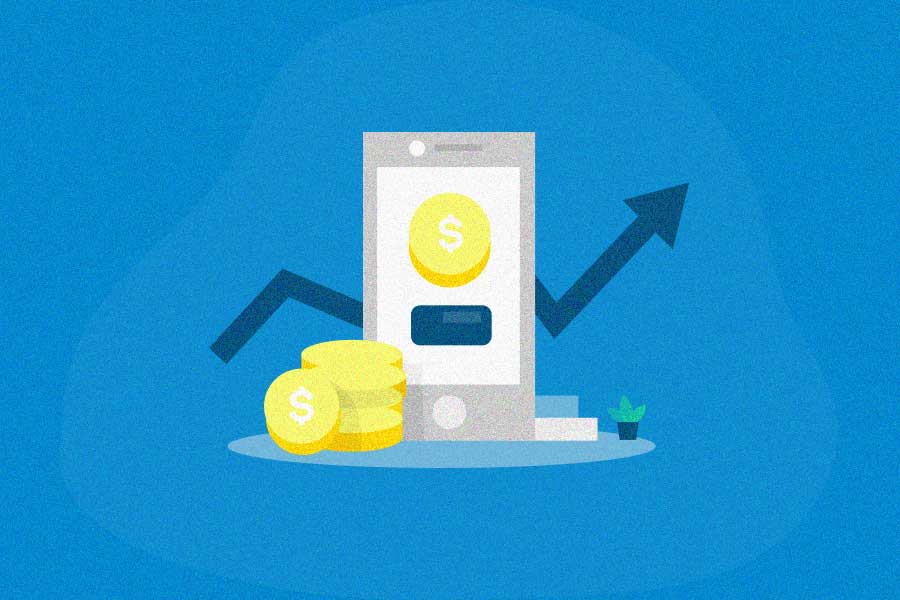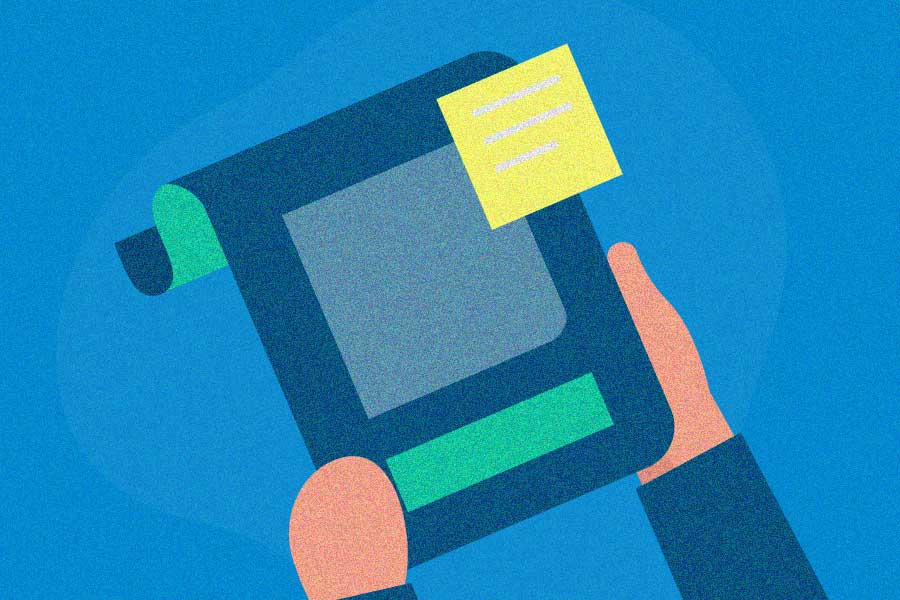Bank referral programs (also called financial referral programs or bank refer-a-friend programs) can help your bank grow its customer base using your existing network of loyal customers.
Today, we’ll break down the benefits of starting a financial referral program for your bank or credit union, best practices for bank refer-a-friend programs, and some of the best bank referral program examples.
What is a bank referral program?
A financial referral program, or bank referral program, encourages your customers to recommend your bank, credit union, or financial institution to their friends, colleagues, and family members.
When a customer recommends your bank to their friend, and that friend opens a new account with you, you reward the existing customer with an incentive to thank them for bringing in a new customer.
Often, financial referral programs also reward the newly referred person when they open an account, to further encourage the new business.
The best bank referral programs aren’t run with paper forms. Instead, they’re automated with software, so it’s easy to track who was responsible for each referral (more on this below).
Why referral programs work for banks
Referral programs are a popular way for businesses in all industries to acquire new clients through the power of word-of-mouth marketing. Instead of marketing with your bank’s own campaign messages, financial referral programs motivate your existing customers to spread the word about your bank to their friends and family.
And these recommendations are trusted: A study by Nielsen revealed that 84% of people see referrals as the most trusted and influential form of advertising.
The Financial Brand further estimates that almost a third of banks and credit unions already have bank refer-a-friend programs. Even if you think your bank’s marketing strategy is already working well, a well-designed referral marketing program will boost both customer acquisition and retention.
Top 10 bank referral program examples (bank refer-a-friend programs)
How to design an effective bank referral program? Look to the experts first. We’ve handpicked ten of the best bank and financial referral programs below, and included our thoughts on why they rock.
1. Provident Bank
The Provident Bank referral program catches customer’s eyes by putting the call to action and reward front and center (“Refer-a-friend! And get $25 or $50”). Note how referring a friend who opens a higher-value business account earns higher rewards.
The program is easy to understand, with the terms laid out in three simple steps. Plus, customers earn the reward for their own account immediately after a friend opens a new account.
Provident’s emphasis on how referrals help build relationships, the focus on sharing to help a friend (“Pay it forward”), and the way the bank thanks customers for spreading the word, are also notable messages your bank should consider applying in its own referral program.
![15 Best Bank Referral Program Examples and Ideas [+ ROI-Boosting Tips for Your Own Program] 1 provident-1](jpg/provident-1.jpg)
![15 Best Bank Referral Program Examples and Ideas [+ ROI-Boosting Tips for Your Own Program] 2 provident-2](jpg/provident-2.jpg)
![15 Best Bank Referral Program Examples and Ideas [+ ROI-Boosting Tips for Your Own Program] 3 provident-3](jpg/provident-3.jpg)
2. UMB
In one of the more creative bank account referral program headlines we’ve seen, UMB highlights the power of their customers’ networks, and the significant rewards referring them could bring in.
Those rewards? $200 for every eligible referral, with no limits on the rewards a customer could earn. We’ve done that math – a customer could earn over $90,000 if their 471 friends all open accounts and meet the requirements.
Referred friends get rewarded as well, as they earn $150 after they open and maintain an account.
The headline and image of friends draw customers right to the program’s call-to-action button – and customers don’t need to scroll to find that button.
We also love the step-by-step process that breaks down everything customers need to refer (complete with images).
And if customers want to share on their phones, the dedicated referral app streamlines the mobile sharing process even more.
3. Citibank Philippines
Citibank offers banking, credit cards, loans, and more. The bank’s referral campaign in the Philippines offers a choice of rewards to clients for referring a friend, including cash rebates, reward points, and miles. This way, there’s a greater chance that rewards will be meaningful to customers. Citibank also gives higher rewards for higher-value accounts within their list of services.
It’s easy for customers to generate and share a referral link – just enter account information, click, and copy. Plus, they can instantly share their referral link on multiple platforms (Facebook, Twitter, email) with one click.
4. Axos Bank
Axos Bank makes their banking referral program “simple, easy, and fun,” as described on their program page. The three-step process on that page concisely covers everything customers need to refer friends. Then, customers simply sign in, get their referral link, and share Axos anywhere.
We also love the equal, double-sided reward: when a referred friend signs up for an Essential Checking account, both the existing checking customer and the referred friend receive $20 deposited into their accounts. And customers can keep referring and earning – there’s no limit to the referral rewards.
5. KeyBank
KeyBank offers a streamlined sharing process, no matter where customers are. Scanning the QR code opens up a mobile-centric referral page with several sharing options, including SMS sharing.
The referral terms are condensed into a short checklist, so customers know exactly what to expect within minutes. And that’s a reward of up to $500 per calendar year, highlighted in a bold call to action – and in red – to effectively motivate sharing.
Since KeyBank is paying out $100 per referral, the bank wants to make sure the new customers brought in are committed. So, new account holders need to make a $500 deposit before the friend who referred them can reap this $100 reward.
6. Chase Banking
Chase Banking reels customers in by placing the possible rewards front and center in their headline (up to $500 per year in cash, paid out as $50 per successful referral). Cash is hard to resist, especially when it’s highlighted in that big a font size!
The three-step process shows that referring friends is simple, as well as rewarding for both the customer and their peers.
And if customers still have questions, Chase’s banking referral program FAQ clears everything up and removes any possible barriers to sharing.
If customers think their friends would be more interested in a credit card or rewards card (other popular offerings from Chase), they can select the separate, dedicated referral program for the exact card of their choosing. Chase links out to these programs on the banking referral page for convenience.
7. Macatawa Bank
The bright colors, creative taglines and compelling images on the Macatawa Bank referral program page drum up plenty of excitement about referring friends.
We love the program’s catchy headline “If you’re happy and you know it, tell a friend,” as that shows exactly what customers should do. And it’s true, everyone could use a little extra cash ($50 per successful referral, to be exact)!
Images are another key player on Macatawa’s referral program page. Through a graphic of friends texting back and forth, Macatawa shows just how easy it is to share the referral code. Other images illustrate the simple, three-step sharing process.
As Macatawa Bank is local to the West Michigan area, the section highlighting community values is especially effective.
This community focus is highlighted in the referred friend reward, as there’s up to $100 available to a friend who opens a new account. (That reward’s carefully crafted to encourage loyalty, as $25 is paid at the account opening, and the other $75 is earned for opening a debit card).
Pro tip: Notice a pattern in these bank referral program examples? Many of these programs explain the referral process in three easy steps. That’s a secret you can steal to streamline your own bank referral program page, and show customers how simple it is to share.
8. Velo by East West Bank
Velo by East West Bank offers online and mobile U.S. banking for people living outside of the United States. With their mobile focus, it makes sense that their bank refer-a-friend program is seamlessly integrated into their mobile app. With just a single tap, customers can copy their personal referral code or share their referral link directly. And if they prefer, they can even share a QR code for their friends to scan!
Once a referred friend opens and funds a qualifying account, Velo pays out a simple reciprocal reward of $20 for both the referrer and friend, paid in Velo fee credits.
Just like its stellar bank referral program counterparts, Velo explains the referral process in just a few easy steps. A big difference here, though, is that Velo also explains what the newly referred friend must do to earn the reward, from the newly referred friend’s perspective. That way, there’s less friction on both sides, and the existing customer can even show the page to their friend if the friend has any questions.
9. UNIFY Financial Credit Union
UNIFY Financial Credit Union draws customers in with a unique referral program catchphrase – “Rewardiness” – which they define as “the sense of accomplishment knowing your friends’ finances are in good hands.” Consider combining a catchy slogan or phrase with an appeal to helping friends, as UNIFY did, to drive more referrals.
The slogan and community-mindedness aren’t the only ways UNIFY’s program excels, though. A simple yet effective rewards structure (“For each new member you refer who opens an account, you both get $25!”), and a set of easy-to-follow steps go a long way in motivating customers to share UNIFY. Customers can even refer multiple friends in one click, by entering all their emails at once.
10. SoFi
Sharing really is rewarding with SoFi’s bank refer-a-friend program, as SoFi has paid over $10 million in cash bonuses across all of their different referral programs. SoFi customers can refer their friends to individual services of their choosing, including personal checking accounts, savings accounts, a credit card, investment options, and loans, based on what they think their friends would benefit from most.
Via the SoFi app, customers can copy their unique referral link in just a few taps, then share in the method that’s most convenient for them (including email, SMS, and social media).
Referring friends is as easy as 1-2-3 thanks to SoFi’s quick explanation of how to participate in the program. And if customers have any more questions about the referral process, they can follow the link to the program’s FAQ page.
5 benefits of bank refer-a-friend programs
You’ve seen the inspiring examples. But are you still wondering why you should start a referral program for your bank?
These benefits show why you can’t afford to miss out on bank refer-a-friend programs:
1. Effectively acquire new customers
Bank refer-a-friend programs work because your customer’s peers trust what they say about you more than they trust marketing messages from your bank.
Thus, leads referred by a friend are more likely to open an account at your bank than “cold leads” who weren’t referred.
2. Reduce acquisition costs
Bank refer-a-friend programs bring in new account holders at a lower cost than other marketing methods.
- According to The Financial Brand, the average customer acquisition cost (CAC) for banks and credit unions (the cost to get someone to open a new account) is $250–$400.
- With referral programs, however, the average CAC is significantly lower, at $110–175.
3. Boost brand awareness
Referral programs empower customers to spread the word about your bank. This quickly and effectively increases brand awareness.
4. Increase customer loyalty
Since referred customers trust the peers who shared your bank with them, referral programs bring in customers who are more likely to stay with your bank for longer periods of time.
- Plus, by rewarding these customer advocates, you’re encouraging their loyalty, as well.
- This means that, in the long run, you’ll end up with customers who have a higher customer lifetime value.
5. Let you harness word of mouth as a channel
A referral program lets you track the word of mouth your customers generate in an actionable way, and use the data to improve your success.
Your happy customers are already talking about you, so why not harness that free publicity in a way that you can measure?
Before you start a bank referral program
Although these benefits are enticing, not every bank is ready for a referral program right away.
Before you start a bank refer-a-friend program, make sure you’ve taken the proper action steps. Having these elements nailed down will help ensure your referral program is a success.
First off, you’ll need to have a solid existing customer base that trusts you highly for their wealth management. Your customers will be the network of people willingly recommending your financial services. And you’ll need a network of reasonable size in order for your referral program to work.
You’ll also need to know the details about your target audience (your existing customers, who will do the referring).
- What are their demographics?
- What platforms do they usually use to get information about your bank? (i.e., specific websites, social media, TV, radio, print media)
- What platforms do they use to communicate with friends? (i.e., email, social media, text)
- What motivates them to sign up? (i.e., convenience? Lower costs? A commitment to community responsibility?)
- What sort of rewards would encourage them to refer their friends?
Knowing your existing customers will also help you understand the leads you want to attract. Most of them may have similar traits, so creating buyer personas may aid you in this process.
In addition, make sure you provide great customer service. A stellar customer experience is the main reason customers will be driven to recommend your bank. You can survey your customers about their experience first, to determine if they are willing to recommend you to others.
5 best bank referral program tips and strategies
As shown in the examples above, the design, rewards structure, and promotion of a bank referral program are the three places that make or break your program. The following program tips and best practices will help you create and run a bank referral program that works.
1. Create an ongoing bank referral program
There’s a reason why the bank referral program examples we highlighted are ongoing, not time-sensitive.
You might have seen other banks give referral bonuses for a limited time. Or, you might have tried this strategy yourself before. Don’t make this common mistake.
People will naturally refer friends to your bank when they know their referral will benefit a friend. Word of mouth happens organically, and you’ll want to capture the benefits whenever you can.
But if you only capture and reward referrals for a short time, and then deactivate the rewards structure, this won’t be worth the time and investment it takes to set up a referral program.
An ongoing bank refer-a-friend program, on the other hand, allows you the opportunity to motivate multiple referrals from the same customer over longer periods and to build true advocates. You’ll also gain long-term, actionable data related to word of mouth.
2. Make sharing easy
If your program is easy to enroll in and share, people will share. Make sure your customers can easily find your referral program and share your bank with their friends, using as few steps as possible, from access to reward.
One of the best ways to do this is to design a referral form with a few simple steps for referring customers to enter their and their friend’s information.
The program’s instructions and terms must also be simple, with a clear referral call to action.
(For detailed tips on how to accomplish this, check out our article on referral program landing pages. We’ve also included solid examples of referral pages and forms in this article’s “program examples” section.)
It’s also recommended to enable customers to share on multiple channels. This way, they have the option to share in the ways they normally communicate with their friends.
For instance, don’t limit your customer’s sharing options to just referral emails. Instead, give them the option to send referrals via social media, email, text message, and other mediums.
The best way to broaden your customer’s sharing options is with a referral link – one that customers can copy and paste anywhere.
If you offer digital banking services, include the referral program in your banking portal. And if you offer mobile banking, you should consider integrating your referral program into your mobile banking app, for easier sharing on the go.
Jefferson Bank makes sharing easy, from both mobile and desktop. They show how simple the referral process is by breaking it down into steps, and let customers easily share their referral link from anywhere.
3. Offer enticing, meaningful rewards
Don’t skimp on referral program rewards.
The best bank referral programs give double-sided referral rewards to motivate everyone involved. Give rewards to both the referrer and their friend – to the referrer as a reward for sending a new customer your way, and to the friend after they make their first deposit.
Furthermore, simplify the process of earning rewards. If customers have to jump through too many hoops to earn a reward, they’ll probably lose motivation.
The best practice is to reward the referrer immediately after someone they refer opens a new account, and to make that reward available for every successful referral a customer makes.
But depending on the actions you want new customers to take, you could also pay a second reward to the referrer after the new customer makes a direct deposit over a certain amount, registers their first debit card purchase, meets certain balance requirements, or remains a customer in good standing for a certain number of days.
It’s also important for the referral offers to be meaningful and connect back to your bank.
- Usually, bank referral rewards consist of a bonus deposit for the referrer’s existing account, and an extra initial deposit to the referred friend’s new account.
- For standard deposit accounts, $50 each for the referrer and friend often works well.
- Set too low of a reward and your customers won’t be motivated.
- But be sure the reward fits your budget, too.
If it aligns with your audience’s values, a charitable or altruistic reward may also work for your bank. Starling Bank rewards referrals by planting trees in the referrer’s name.
4. Promote, promote, promote
Make sure every customer is aware of, and can access, your bank refer-a-friend program. Even if you create a program that follows all the other best practices, it won’t work if no one knows about it. Here are some tips for promoting a bank referral program:
- Post signs in your branch, and on your ATMs, that advertise your program.
- Create a website banner or hero image that customers can easily find on your homepage. Link it directly to your referral landing page.
- Consider other subtle ways to promote your program on your website. For example, some banks add a link to their footer or menu. As long as customers can see it, and find it, they’ll be more likely to join your program.
- Add links to your referral program within your online banking portal so regular patrons can easily access it.
- Post about your referral program on your social media account. If you have multiple branches, make sure each branch promotes the program on their local social media accounts.
- Email loyal customers and personally invite them to refer their friends. Or, send a mass email about your program to all of your customers at once.
- Use transactional and other regular emails, such as newsletters, to promote your referral program with a short referral call to action.
- Lead into your referral program using your regular customer surveys. If someone gives you good feedback, direct them to your program.
Pro tip: Continually promote your program so your customers will instinctively use it when they want to tell their friends about your bank. Referral program promotion is a long-term investment.
Find more referral program promotion strategies here.
5. Automate the process with referral software
With the right referral software, the hassle of manually managing referrals will be a thing of the past for your bank.
Referral software tools allow you to track the amount of referrals your customers generate, track which customers your referrals are coming from, and quickly distribute rewards. You’ll also have plenty of data on your referral program that you can use to measure success and refine your program structure.
Plus, referral software generates unique referral links for customers to easily share your program via social media and email.
Since referral software streamlines program design, tracking, rewarding, and promotion, it’s an essential tool for any bank that wants to run a successful referral program.
Wrapping things up
When designing a bank referral program, it’s important to focus on your customer’s needs, your program design, rewards structure, program promotions, and referral tracking. These are key to designing a top-notch bank referral program.
Of course, referral software can also make the process much easier. Compare over 35 referral software options in this comprehensive, sortable list.


![15 Best Bank Referral Program Examples and Ideas [+ ROI-Boosting Tips for Your Own Program] 4 provident-4](jpg/provident-4.jpg)
![15 Best Bank Referral Program Examples and Ideas [+ ROI-Boosting Tips for Your Own Program] 5 UMB bank referral program](png/umb-bank-referral-program.png)
![15 Best Bank Referral Program Examples and Ideas [+ ROI-Boosting Tips for Your Own Program] 6 citibank-referral-program](jpg/citibank-referral-program.jpg)
![15 Best Bank Referral Program Examples and Ideas [+ ROI-Boosting Tips for Your Own Program] 7 axos financial referral program](png/axos-financial-referral-program.png)
![15 Best Bank Referral Program Examples and Ideas [+ ROI-Boosting Tips for Your Own Program] 8 axos bank referral program](png/axos-bank-referral-program.png)
![15 Best Bank Referral Program Examples and Ideas [+ ROI-Boosting Tips for Your Own Program] 9 keybank referral program](png/keybank-referral-program.png)
![15 Best Bank Referral Program Examples and Ideas [+ ROI-Boosting Tips for Your Own Program] 10 Chase Refer a Friend 1](png/chase-refer-a-friend-1.png)
![15 Best Bank Referral Program Examples and Ideas [+ ROI-Boosting Tips for Your Own Program] 11 Chase Refer a Friend 2](png/chase-refer-a-friend-2.png)
![15 Best Bank Referral Program Examples and Ideas [+ ROI-Boosting Tips for Your Own Program] 12 macatawa bank referral program](png/macatawa-bank-referral-program.png)
![15 Best Bank Referral Program Examples and Ideas [+ ROI-Boosting Tips for Your Own Program] 13 Velo by east west bank refer a friend program](png/velo-by-east-west-bank.png)
![15 Best Bank Referral Program Examples and Ideas [+ ROI-Boosting Tips for Your Own Program] 14 velo referral receiver](png/velo-2-for-receiver.png)
![15 Best Bank Referral Program Examples and Ideas [+ ROI-Boosting Tips for Your Own Program] 15 15 Best Bank Referral Program Examples and Ideas [+ ROI-Boosting Tips for Your Own Program] 1](png/rewardinessunify1.png)
![15 Best Bank Referral Program Examples and Ideas [+ ROI-Boosting Tips for Your Own Program] 16 unify bank referral form](png/rewardinessunify2.png)
![15 Best Bank Referral Program Examples and Ideas [+ ROI-Boosting Tips for Your Own Program] 17 sofi sharing is rewarding](png/sofi-sharing-is-rewarding.png)
![15 Best Bank Referral Program Examples and Ideas [+ ROI-Boosting Tips for Your Own Program] 18 jefferson bank referral program](png/jeffersonbank-1.png)
![15 Best Bank Referral Program Examples and Ideas [+ ROI-Boosting Tips for Your Own Program] 19 hsbc](png/hsbc.png)
![15 Best Bank Referral Program Examples and Ideas [+ ROI-Boosting Tips for Your Own Program] 20 bank refer a friend plant a tree](png/bank-refer-a-friend-plant-a-tree.png)



